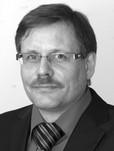Regional physical fitness statistics of school population: benchmarking analysis
Фотографии:
ˑ:
Dr.Biol., Professor S.P. Levushkin1
Dr.Biol., Professor V.D. Sonkin1, 2
1Russian State University of Physical Education, Sports, Youth and Tourism (SCOLIPE), Moscow
2Institute of Developmental Physiology of RAE, Moscow
The study analyzes the regional physical fitness statistics of the national school population, with the test data of more than 40 thousand schoolchildren across the Russian Federation mined for the benchmarking analyses from the regional physical development and physical fitness test and analytical databases. The study gives data on the schoolchildren physical qualities with median physical fitness points for every of the 8 federal territories of the Russian Federation. The physical fitness test data may be applied for benchmarking analysis of federal subjects, rural and urban districts and classified school communities, with a special attention given to the geographic, climatic and socio-economic realities of every region.
Keywords: physical fitness, development rates, schoolchildren, federal territories of the Russian Federation.
References
- Bezrukikh M.M., Sonkin V.D. [ed.]. Organizatsiya i otsenka zdorovesberegayuschey deyatelnosti obrazovatelnyih uchrezhdeniy [Organization and evaluation of health-saving activities of educational institutions]. Guide for educators. Moscow: VARIANT publ., 2005, 584 p.
- Blinkov S.N., Krylova A.V., Levushkin S.P. Vliyanie sistemyi fizkulturno-ozdorovitelnoy rabotyi na fizicheskoe sostoyanie selskih shkolnikov [Influence of sports and recreational system on physical condition of rural schoolchildren]. Fizicheskaya kultura: vospitanie, obrazovanie, trenirovka, 2008, no. 6, pp. 75-77.
- Bondar N.V. Izmenenie sostoyaniya zdorovya shkolnikov v protsesse obucheniya [Changes in state of health of schoolchildren in learning process]. Novye issledovaniya. Almanakh [New research. Almanac], 2004, no. 1-2, pp. 88-89.
- Zhukov O.F., Levushkin S.P. Organizatsiya i soderzhanie zdorovesberegayuschey deyatelnosti v sisteme obschego obrazovaniya [Organization and maintenance of health-promoting activities in general education system]. Ulyanovsk: UIPKPRO publ., 2009, 288 p.
- Zaytseva V.V. Metodologiya individualnogo podhoda v ozdorovitelnoy fizicheskoy kulture na osnove sovremennyih informatsionnyih tehnologiy [Methodology of individual approach in health-improving physical education based on modern information technologies]. Doct. diss. abstract (Hab.). Moscow, 1995, 47 p.
- Izaak S.I. Monitoring fizicheskogo razvitiya i fizicheskoy podgotovlennosti: teoriya i praktika [Monitoring of physical development and physical fitness: theory and practice]. Moscow: Sovetskiy sport publ., 2005, 196 p.
- Kuchma V.R. Deti v megapolise: nekotoryie gigienicheskie problemyi [Children in metropolis: some hygienic problems]. Moscow: Scientific Center for Children's Health, Russian Academy of Medical Sciences publ., 2002, 280 p.
- Levushkin S.P. Otsenka fizicheskogo sostoyaniya shkolnikov s ispolzovaniem kompyuternykh tekhnologiy [Evaluation of physical condition of schoolchildren using computer technologies]. Teoriya i praktika fiz. kultury, 2002, no. 1, pp. 60-63.
- Levushkin S.P. Fizicheskaya podgotovka shkolnikov 7-17 let, imeyushchikh raznye morfofunktsionalnye tipy [Physical training of 7-17 year-olds, having different morphofunctional types]. Ulyanovsk: UIPK PRO publ., 2006, 232 p.
- Levushkin S.P., Platonova R.I., Gulyaev M.D. et al Monitoring fizicheskogo sostoyaniya shkolnikov [Monitoring physical condition of schoolchildren]. Moscow: Sovetskiy sport publ., 2012, 168 p.
- Polyakov S.D., Khrushchev S.V., Koreeva I.T. Monitoring i korrektsiya fizicheskogo zdorovya shkolnikov [Monitoring and correction of physical health of schoolchildren]. Teaching aid. Ayris publ., 2006, 96 p.
- Rubanovich V.B. Morfofunktsionalnoe razvitie detey i podrostkov raznyih konstitutsionalnyih tipov v zavisimosti ot dvigatelnoy aktivnosti [Morphofunctional development of children and adolescents of different constitutional types dependent on motor activity]. Doct. diss. abstract (Med.). Tomsk, 2004, 43 p.


